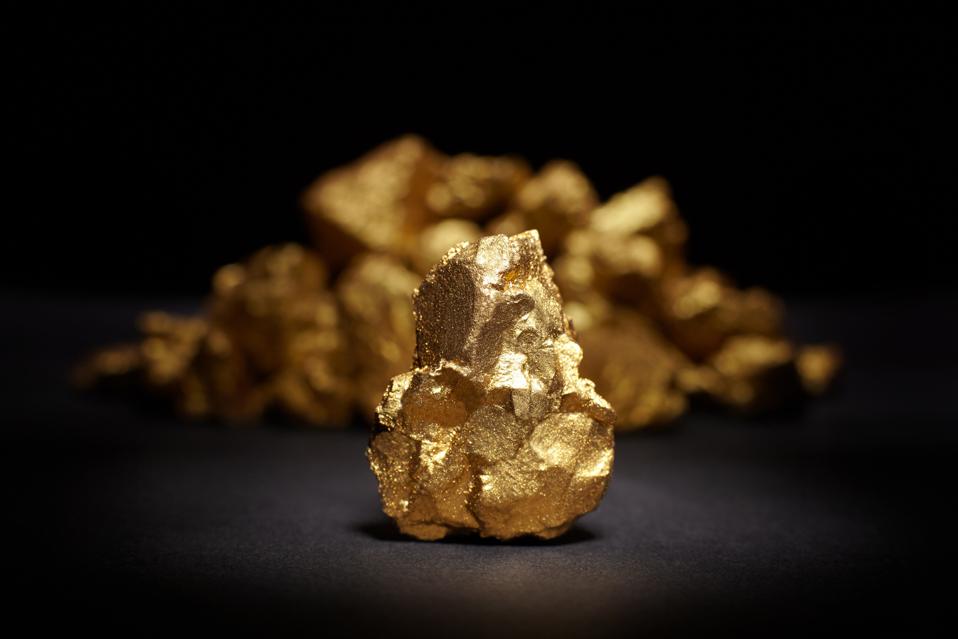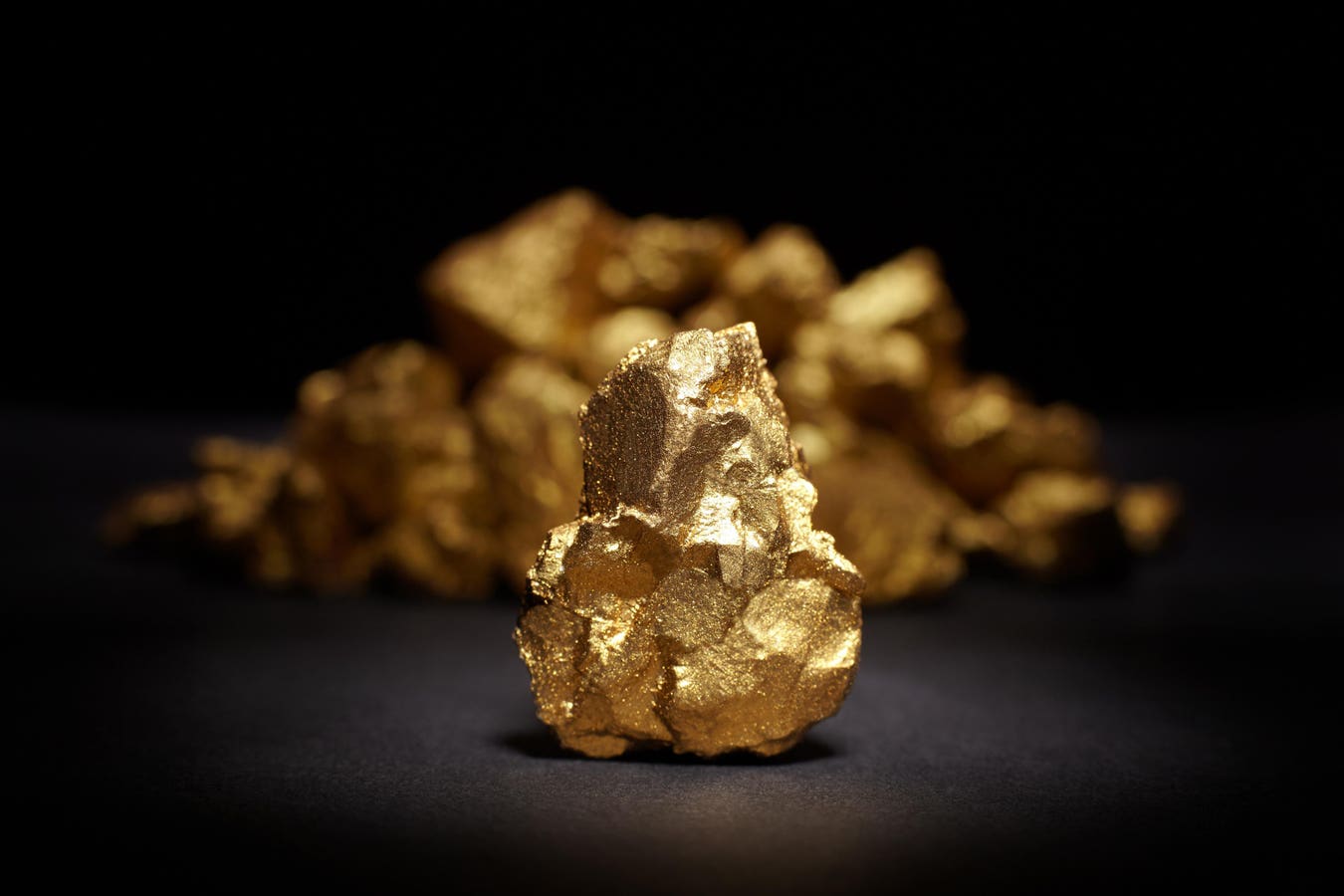
Closeup of big gold nugget on a black background
getty
There’s a real fascination with nanoscale worlds that has always intrigued humans – the question is how much ancient societies were able to interact with microscopic forces prior to the advent of digital technologies, and, most recently, artificial intelligence, which is quickly turning our scientific world inside out.
What did those earlier civilizations do on the nanoscale? Did they make use of nanoscience at all?
The answer, broadly, seems to be yes, although prior generations did not have the tools that we do now.
In Silica
I had my interest piqued by the promotional materials from this year’s 10-9 celebration, where we celebrate nanotech as revolving around particles on the nanometer or “10-9” scale (1 billionth of a meter.) The authors were talking about the atavistic practice of glass-blowing, and how it really involved shifting the status of particles on a nanoscale. The heating, deformation and annealing of stained-glass windows, for instance, where impurities would deliver the colors and tones that would give cathedrals and other buildings their grandeur.
There’s even the suggestion (in recent studies) that this molecular miracle-making actually cleaned the air inside.
“Chemists at Australia’s Queensland University of Technology say that medieval glaziers produced paint using tiny particles of gold in different sizes, and used glass stained with these gold nanoparticles to decorate church windows across Europe,” writes Judith Kane for Renaissance Magazine. “Electrons in the gold particles become very active when heated by sunlight and oscillations of the electrons can couple with the electro-magnetic field of sunlight, creating a resonance and enhancing the magnetic field on the surface of the gold nanoparticles, which destroys air borne pollutants such as methanol, carbon monoxide, and volatile organic compounds.”
I thought it was interesting how, in an aside enumerating the kinds of VOCs that this method would deal with, Kane talks about what chemicals are emitted by materials in upholstery, etc. as a “new car smell.”
In any case, it seems the science of the early ages ‘anno domini’ knew how to use gold, a very special element, to some effect.
Ok, what else?
Shimmering Images and Nanomaterials
Another widespread use of nanoscale elements has to do with the reason that you look at a painting in the Louvre and see the range of color and visual power that makes some of these ancient works of art “shine.”
Art historians have identified the practice of crafting something called “zwischgold” where a very thin golden patina is added to the oil paintings, in order to create a paler tone. The gold in this material, according to modern analysis, is around 20 to 50 nanometers thick.
And scientists are looking everywhere.
“A survey of 162 objects was recently implemented at the Swiss National Museum Collection Centre, focusing on polychrome wooden sculptures mainly dated 1400–1550 and produced in southern Germany and Switzerland,” write the authors of a modern paper on zwischgold experimentation. “Handheld X-ray fluorescence (XRF) measurements show a high rate of correlated silver and gold signals mainly in a proportion range of 1:5–3:1, indicating Zwischgold in extremely diverse areas such as hair, beard, crown, gown fold, bordure, dalmatic, undergarment and attribute of saint statues, as well as altar background, frame and framework.”
So to put it simply, ancient artists and artisans used ultra-thin hammered gold with silver to gild all kinds of important items that are now, in this very different era, artifacts.
The Persistence of Alchemy
I’m going to leave it to the reader to go back and research the crafting of “Damascus steel,” which apparently contained nanotubes, or the study of alchemy, where those long-dead engineers purported to be able to make stones into gold, or something.
Further back, we have all kinds of theories about whether the ancient Egyptians had some form of early nuclear energy, or some other nanotech applications, or whether the Hebrew Ark of the Covenant used gold to achieve localized radiation.
As recently as the medieval age, scientists were trying their hardest to do nanoscale science with whatever was handy, much of which got branded as the pursuit of “alchemy.”
Here’s a cool little write-up comparing that old discipline to what people are doing now, with AI. I like how the writer’s father got his degree at MIT.
“The alchemical nature of LLMs demands a willingness to experiment, to try new approaches, iterate, and to persevere in the face of uncertainty and setbacks,” writes Greg Robinson. “The alchemist must be comfortable with the inherent unpredictability of working with these models, embracing the potential for surprise and serendipity. They must be patient and persistent, recognizing that the process of eliciting emergent properties and exploring latent spaces is often a long and iterative one.”
What would those elder innovators have said about an age where AI can tell us how to make new proteins, or assist in developing mRNA vaccines?
Old Magic and New Magic
Generally speaking, as artificial intelligence takes off, there’s the understanding that we’re crossing the rubicon, into a new “magic age.”
The magic of the ancients: alchemy, latin spells, charms, and the building of idols, all receded as modern Western medicine and science ascended. But now, the kinds of things that AI can do could be called, in many ways, a new “scientific magic.” Our world is changing, and will never be the same again. We have to venture forward with confidence, but also with humility and quite a lot of deliberation. Because a new kind of magic is at our fingertips.

